Peperomia obtusifolia is an indoor plant commonly tagged as the “Baby Rubber Tree Plant“, “Dwarf Rubber Tree Plant“, or “Pepper Face“. It is a famous houseplant native to Florida, Mexico, and the Caribbean. However, this charming plant features round, smooth, dark green leaves and short stems, typically reaching a height of no more than 12 inches. Moreover, Belonging to the Peperomia genus within the Piperaceae family, which includes approximately 600 variants widespread in tropical regions, this plant family has attracted attention for its chemical composition. Furthermore, studies have unveiled diverse compounds, such as essential oils, pyrones, lignoids, polyphenols, unsaturated amides, and alkaloids, found within various Piperaceae species.
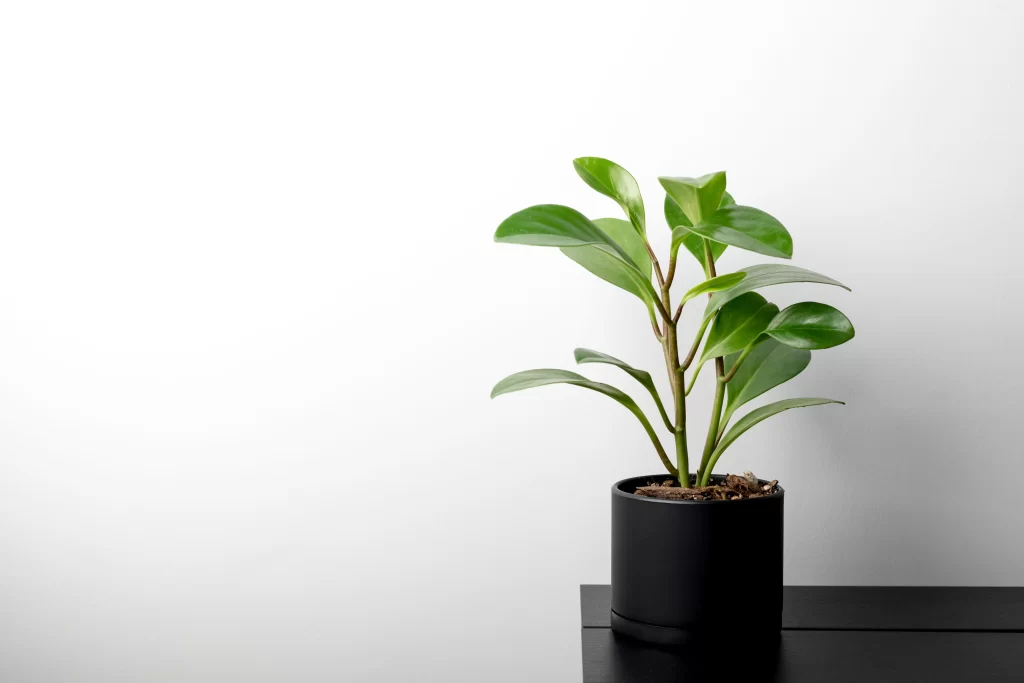
General Botanical Information to Detect Peperomia Obtusifolia
Peperomia obtusifolia is a perennial herbaceous plant from the Piperaceae family. Since it is suitable for USDA hardiness zones 10 and 11 and is not native to North America. However, It has moderate drought tolerance and can survive in various soil types. Moreover, It has good pest resistance and prefers shade. Meanwhile, this plant is well-suited for various landscaping and gardening applications.
Here’s the botanical information about Peperomia Obtusifolia:
| Features | General Botanic Information |
| Scientific Name | Peperomia obtusifolia |
| Pronunciation | pep-per-ROE-mee-uh ob-too-siff-FOLE-leeuh |
| Common Name(s) | Peperomia, Baby Rubber Plant, Dwarf Rubber Tree Plant, Pepper Face |
| Family | Piperaceae |
| Plant Type | Perennial, herbaceous |
| USDA Hardiness Zones | 10 through 11 and generally available within its hardiness range |
| Planting Month for Zones 10 and 11 | Year-round |
| Origin | native to Florida, Mexico, and the Caribbean |
| Pest Resistance | Usually not affected by pests in the long term |
| Light Requirement | Grows well in shade, however, survive best in 65°F and 75°F (18°C to 24°C) |
| Soil Tolerances | Tolerates slightly alkaline, clay, sand, acidic, and loamy soils |
| Plant Spacing | 24 to 36 inches |
| Height | 0.5 to 1 foot |
| Spread | 1 to 2 feet |
| Habitat | Found in Rockland hammocks, hydric hammocks, strand swamps |
Chemical in Piperaceae Family Compounds
Chemical studies conducted on species within the Piperaceae family have compounded. These compounds encompass essential oils, pyrones, lignoids, polyphenols, unsaturated amides, and alkaloids[1]Ilyas, S, et al., CHEMICAL COMPOSITION OF ESSENTIAL OIL FROM IN VITRO GROWN PEPEROMIA OBTUSIFOLIA THROUGH GC-MS, Pak. J. Bot., 46(2): 667-672, 2014. Read. Moreover, these findings contribute to our scientific knowledge and open doors to potential medicinal and horticultural applications of these compounds, making the Piperaceae family an intriguing subject of study for researchers and plant gardeners alike.
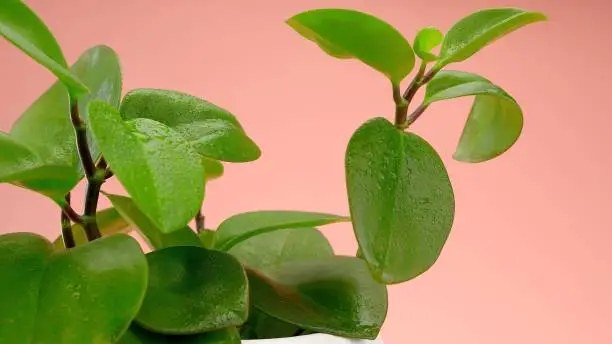
However, numerous members of the Piperaceae family hold medicinal significance, having been employed in treating various ailments, including vaginitis, psychotropic conditions, antioxidant properties, intestinal disorders, etc.
Proper Management Requirements of Peperomia Obtusifolia
Soil and Watering
Cultivate Peperomia plants in a well-draining houseplant soil mixture enriched with perlite to ensure proper oxygenation of the root system. However, water Peperomia houseplants sparingly, allowing the soil to dry to about 1 – 2 inches between waterings. Meanwhile, if your Peperomia obtusifolia starts to wilt despite regular watering, it may be overwatered, leading to insufficient oxygen reaching the roots.
Fertilizing
During the summer, leach the soil with water to remove any salts and minerals left behind by fertilization. However, re-pot as necessary, but opt for smaller pots unless you’re incorporating Peperomia into a larger dish garden.
Temperature and humidity
Place this houseplant away from direct sunlight in medium to low light conditions. Alternatively, Peperomia plants can thrive under fluorescent lighting in an office setting. However, a temperature between 60 to 85°F is its best spot, where it grows most contentedly. [2]Requirements for Baby Rubber Tree Plant for well-being. Read
As for humidity, it needs a little misting now and then, especially when summer’s season sets in for its well-being.
Peperomia Obtusifolia enjoys a shady and humid environment. Hence, the temperature ranges between 65°F and 75°F (18°C to 24°C). However, maintaining a consistent level of humidity around the plant is essential to prevent leaf yellowing, browning, and drying.
Read: Jade Plant Types: Exploring a World of Green Varieties!
Peperomia obtusifolia vs. Marble Peperomia
- Peperomia obtusifolia ⇒ Known as the Baby Rubber Plant, it has smooth, dark green leaves. It’s native to Florida, Mexico, and the Caribbean. However, requires medium to low light, well-drained soil, and moderate watering.
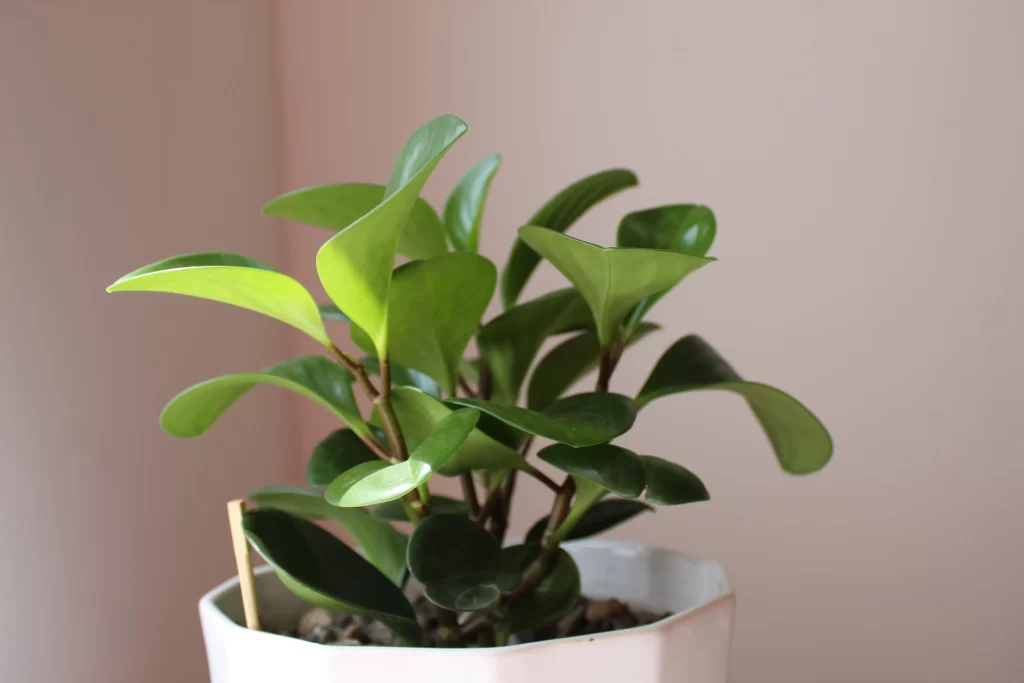
- Marble Peperomia ⇒ Recognizable by marbled patterns on its leaves. Originates from Brazil. Thrives in bright indirect light, with moderate watering. However, it is often considered low-maintenance and pet-friendly.
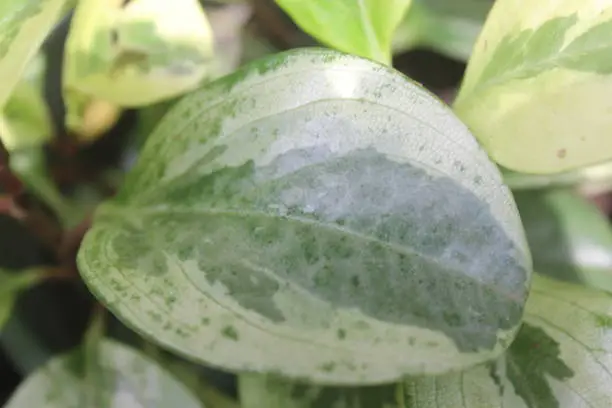
A watering strategy for Peperomia obtusifolia
A consistent and effective watering strategy for Peperomia obtusifolia (Baby Rubber Plant) throughout the seasons involves adjusting the frequency and amount of water based on the changing environmental conditions.
Watering this plant underwater rather than overwatering is best since it can withstand drying out better than sitting in water.
| Season | Water Frequency | Amount |
| Spring & Summer (Growing Season) | Moderate; allow top 1-2 inches of soil to dry between waterings | Thorough watering, Allow excess water to drain from the pot. |
| Fall (Transition Season) | Reduce frequency as days shorten and temperatures drop | Moderate; avoid overwatering |
| Winter (Dormant Season) | Water sparingly due to reduced growth | Smaller amounts; avoid waterlogged soil |
| General Tips | Use well-draining potting mix, pot with drainage holes | Water at the base to avoid wetting leaves |
It would help if you watered your Peperomia Obtusifolia properly to stay healthy and flourish. However, underwatering can cause the leaves to drop or wilt while overwatering can cause root rot. Moisture should be kept at a slight level without making the soil too wet.
Peperomia Diseases and Control
You should be aware of a few common issues and take measures to control them. However, the primary diseases affecting Peperomias include ring spots, oedema, phytophthora rot, and cutting rot[3]Peperomias Diseases. Read.
| Disease | Cause | Symptoms | Control Measures |
| Ring Spot | Virus | – Concentric, brown ring spots on leaves – twisted young leaves | – Use sterilized soil mix- Maintain an insect-free environment |
| Oedema | Possibly a virus | – Small raised pimply areas on both leaf surfaces | – Same as for ring spot |
| Phytophthora Rot | Soilborne fungi (Phytophthora spp.) | – Blackening on the stem at the soil line | – Remove affected plants – However, avoid overwatering and ensure well-draining soil |
| Cutting Rot | Soilborne fungi (Various) | – Dark brown to black, petiole and base of leaves- Root decay | – Same as for Phytophthora rot |
Pests and Diseases
While Peperomia is a resilient plant, it’s not entirely immune to challenges. The main pest issue to watch out for is mites. However, these tiny invaders can cause trouble, so keep a close eye on your Peperomia and take action promptly if you spot any mites.
Read: Goldfish Plant Care: Dealing with Common Diseases and Pests
How to Treat Common Pests and Diseases?
Peperomia Obtusifolia can still fall victim to certain pests and diseases. The most common problems include mealybugs, spider mites, and scale insects. However, to treat these pests, isolate the affected plant and use a natural insecticidal soap or neem oil spray. Apply the treatment according to the instructions, ensuring thorough plant coverage.
Stem and Leaf appearance of Peperomia Obtusifolia
Stems of Peperomia Obtusifolia
These plants boast slender, upright stems ranging from 3 to 16 inches tall. The stems may stand erect or trail-like vines, often branching out and containing clear sap.

Peperomia Leaves
The leaves are distinctive, measuring between 1 to 5 inches in length. Since they are arranged alternately along the stems and feature an oval to narrowly spoon-shaped appearance[4] Leaf Appearance of Peperomia. Read.
However, the leaf base is wedge-shaped, and the tips can be notched or rounded.
Moreover, Leaf stalks comprise about one-third of the blade’s length and do not have wings, inflation, or clasping at the stem base.
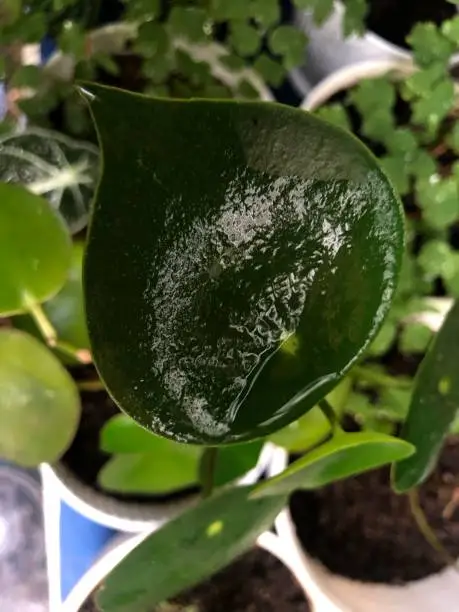
Flowers of Peperomia Obtusifolia
Flower Appearance
Delicate, tiny white flowers are arranged in thin, upright spikes measuring 2.2 to 9 inches long.
Flowering Season
These plants have the charming characteristic of producing flowers periodically throughout the year, ensuring a touch of beauty at various times.
Fruits of Peperomia Obtusifolia
- Fruit Shape ⇒The fruits take on an oval shape, with dimensions less than half an inch.
- Fruit Cover ⇒ The fruits are encased in a fleshy covering.
- Fruit Color ⇒ Typically, the fruits exhibit a brown hue.
Propagating Peperomia Obtusifolia
Peperomia obtusifolia can be propagated through several methods. However, the best propagating approach for Peperomia obtusifolia typically involves using leaf or stem cuttings.
Stem Cuttings for Propagating Peperomia Obtusifolia
Select stem cutting
Choose a healthy stem with multiple nodes.
Cutting Strategy
Use sharp scissors or shears to cut a 2 to 4-inch stem section with at least one node.
Dry the stem-cutting
Allow the cut ends to air dry for a few hours and this prevents rot.
Plant in pot
Place the stem cuttings in a well-draining potting mix.
Water
Lightly water the cuttings and position them in a warm, indirectly lit area.
Maintain
Keep soil consistently moist and humidity high. However, covered with plastic to create a mini-greenhouse effect.
Rooting
Roots should form in a few weeks to a couple of months.
Transplant
Once roots are established, transfer the new plants to individual pots.
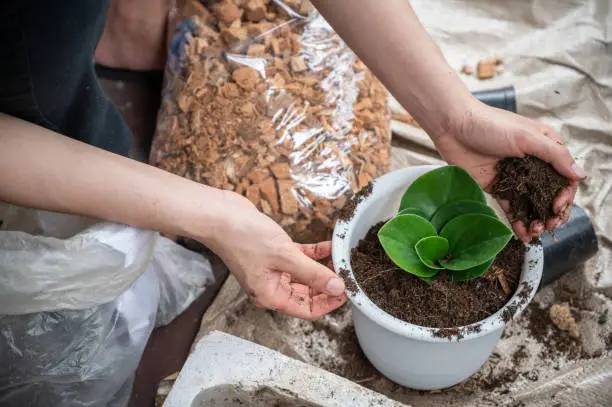
Concluding
However, with its distinctive round, dark green leaves and adaptable growth, it thrives indoors and in tropical landscapes. However, there are several types of peperomias, all members of the Piperaceae family, which make them interesting subjects for botanical study and horticultural interest. To get the best results from your Peperomia obtusifolia, find an area with good indirect light, maintain the right temperature, and mist it periodically.
References



